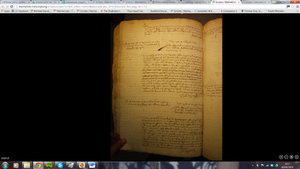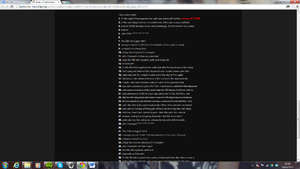Difference between revisions of "Layout of page"
Jillwilcox (Talk | contribs) |
Jillwilcox (Talk | contribs) |
||
| Line 1: | Line 1: | ||
Created 06/04/14 by JW | Created 06/04/14 by JW | ||
| + | |||
| + | Purpose: The purpose of this page is to explain how volunteers should mark up the text to explain to others how the text was laid out on the page. | ||
'''Transcription and editorial policy''' | '''Transcription and editorial policy''' | ||
Revision as of 09:58, April 7, 2014
Created 06/04/14 by JW
Purpose: The purpose of this page is to explain how volunteers should mark up the text to explain to others how the text was laid out on the page.
Transcription and editorial policy
Marking up of Text – This is an example of how text should be marked up.
Signatures have been marked up as a note, and as written not expanded
Text that appears in the margins should be indicated by a note. Most pages follow a fairly standard layout, see below where you can see the page laid out for the statement of a new witness, with the case details on the left and the details of the witness on the right with the statement written below.
An example of how to mark up a page.
Words that are clearly in the left margin are marked as a note.
Centre headings also to be marked as a note
Text written in margins
Use MARGIN button and add Left (or Right, Top left, Top Left, Bottom Left, Bottom Right as appropriate) click enter
Letters lost due to manuscript staining or damage
{…} Letters lost due to staining, damage, etc. Give an indication, if possible, of how many letters are lost and if any letter forms are even partially visible.
Letters deleted in manuscript
STRIKETHROUGH Use the strikethrough function to indicate text deleted in the documents. Transcribe as much as you can see.
Text inserted above (or below) lines in main body of text
Use the insert button ˹XXX˺ for text written between the lines

